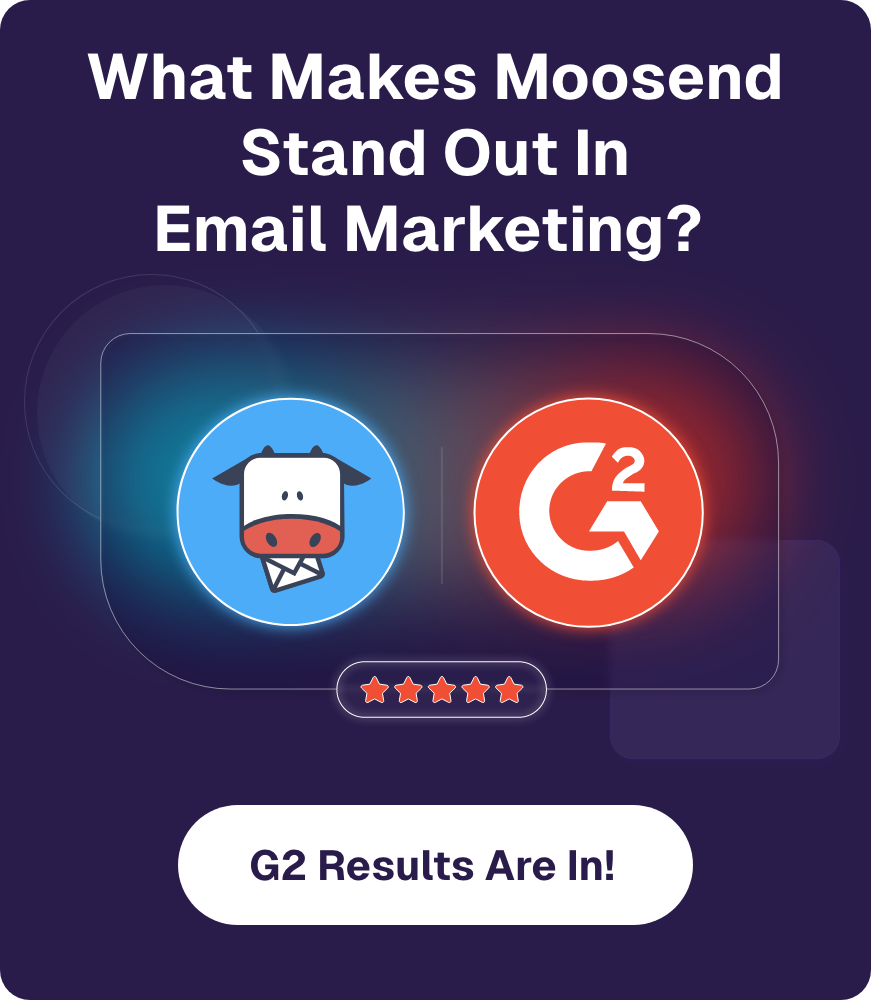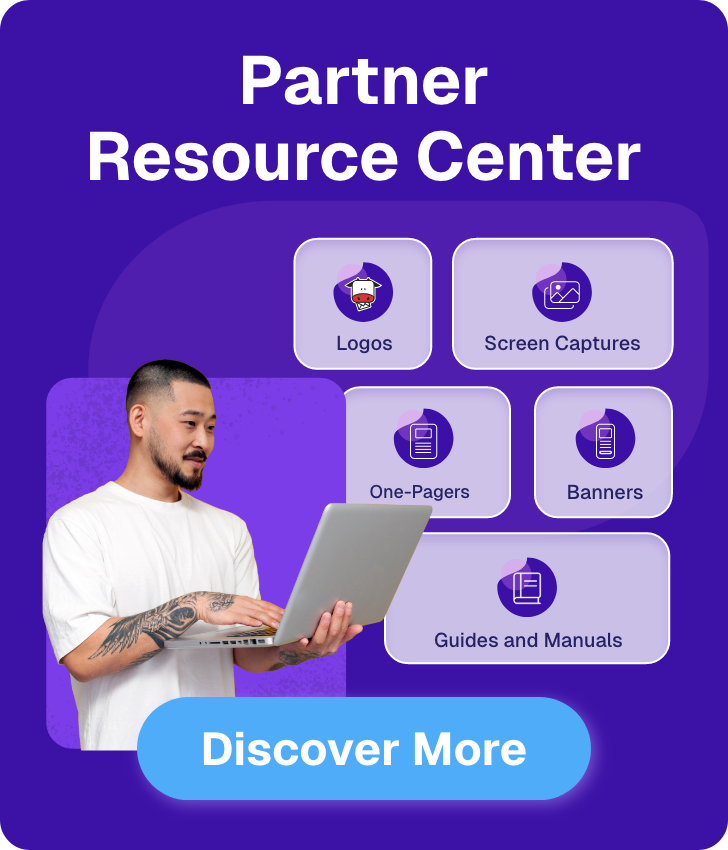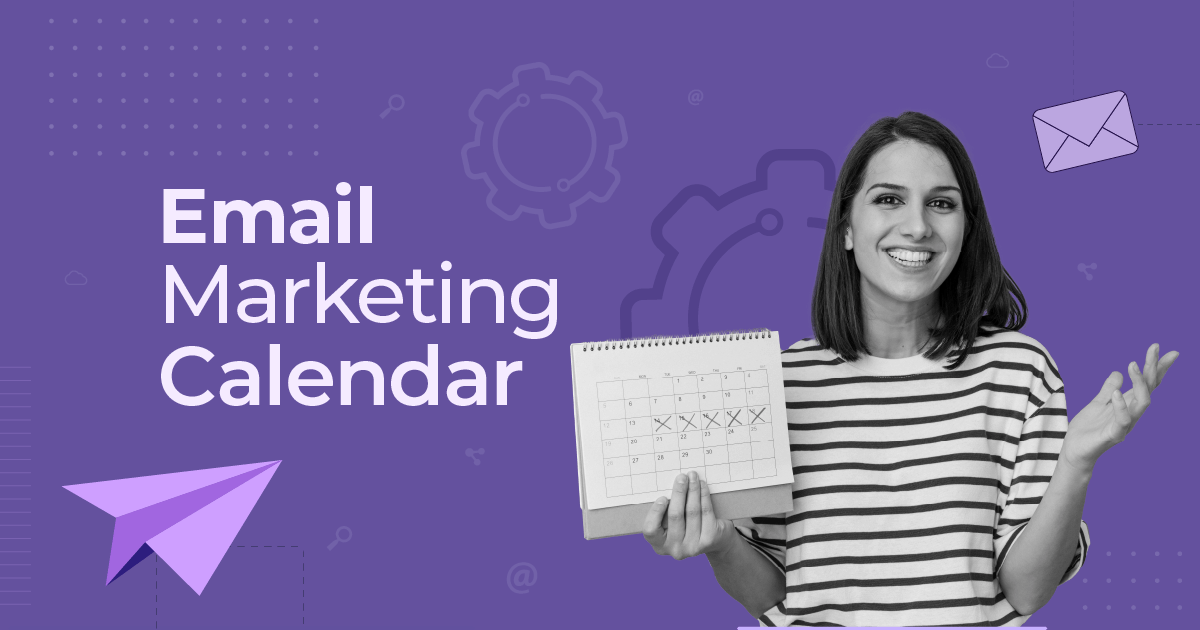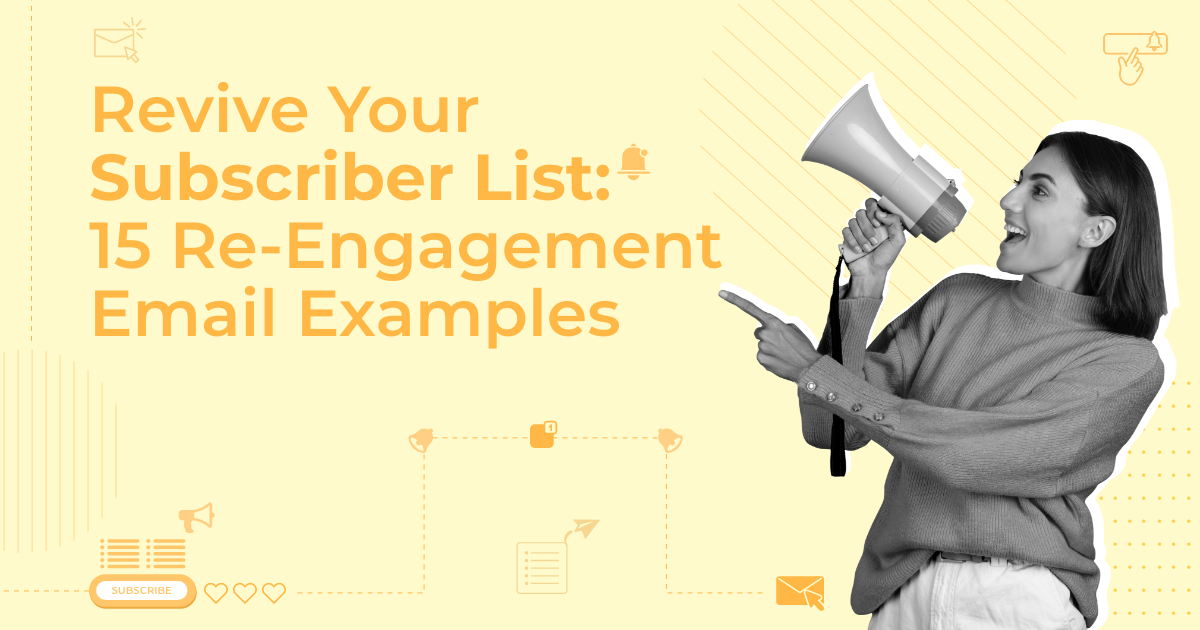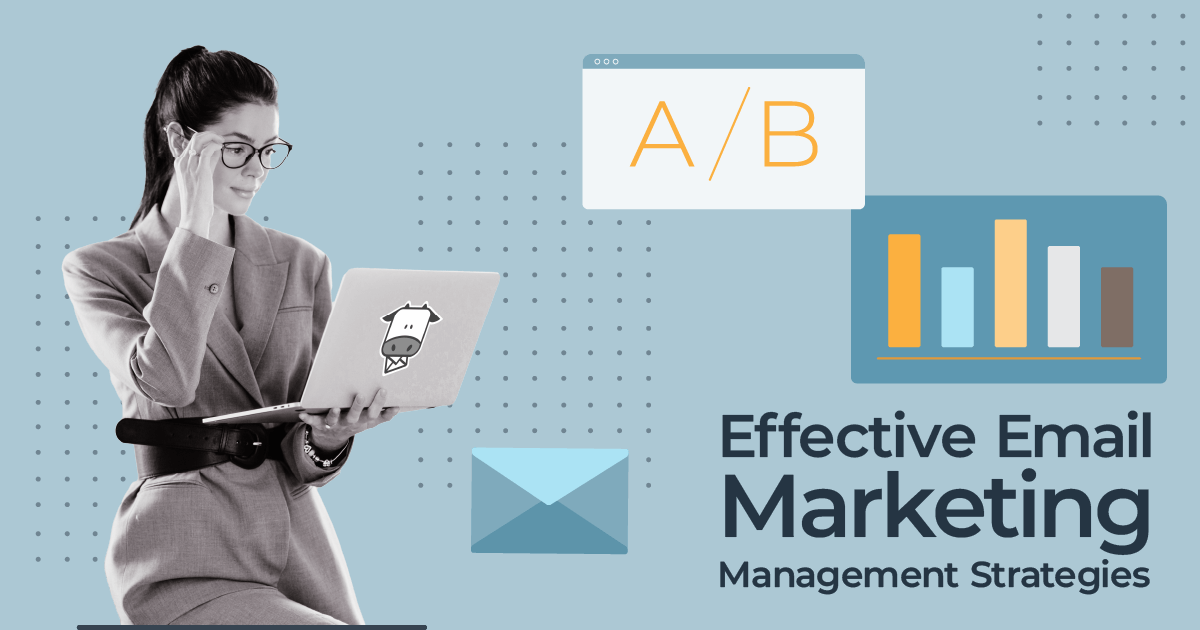
What Is Email Fatigue And How To Overcome It [2025]
Email fatigue is a problem we’ve all experienced, often without realizing it.
Think about the last time you opened your inbox, only to find it flooded with emails you quickly ignored or deleted. It’s not just time-consuming—it disrupts your communication.
Just like how a cluttered inbox frustrates you, imagine how your customers feel when they receive too many emails from you. This leads to email burnout, where subscribers feel overwhelmed, start to disengage, and eventually unsubscribe from your list.
To prevent this, focus on sending content that matters and respects your audience’s time. This ensures your emails are not just opened but also valued and acted upon.
Email fatigue is a real issue that can hurt your marketing efforts. Are you willing to risk losing subscribers and sales or find a solution?
What is Email Fatigue?
Email fatigue, or email burnout, occurs when someone becomes overwhelmed, frustrated, or disengaged from receiving too many messages.
This overload can negatively impact a person’s well-being, leading to stress and a lack of productivity as they struggle to manage incoming emails.
For example, imagine signing up for a newsletter from a brand you like. At first, you enjoy the emails, but over time, they send you daily updates, many of which aren’t relevant to your interests. Eventually, you stop opening them or unsubscribe because it’s too much to handle.
The Impact of Email Fatigue on Your Email Marketing Strategy
The following stats show that email burnout is a major challenge for every business relying on email marketing.
- 51% of participants state that the most common reason for unsubscribing from marketing emails is receiving them too frequently. (Hubspot)
- Half of Millennials and Gen Z tend to overlook company communications that lack personalization, while 73% expect companies to engage with them instantly. (Salesforce)
- 91% of marketing executives are somewhat aware of potential issues with inconsistent messaging or overlapping campaigns. (Optimove)
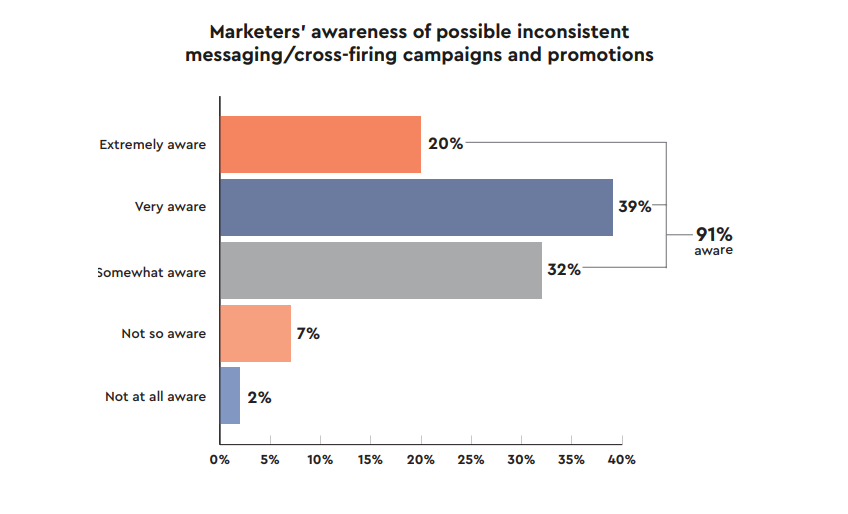
If ignored, email burnout will start to affect more than just your subscribers—it will have a direct impact on your email marketing campaigns and overall brand performance.
- Lower open rates: Overwhelmed recipients are less likely to open future emails, leading to fewer conversion rates and decreased profit.
- Increased unsubscribes: When emails lack value, recipients unsubscribe, shrinking your audience and signaling a loss of interest, making re-engagement harder.
- Reduced engagement: Email fatigue lowers engagement across all channels, not just emails. When subscribers stop opening emails or unsubscribing, they lose touch with your brand, leading to disengagement from your social media, website, and other platforms, weakening your overall marketing efforts.
- Bad deliverability rates: High unsubscribe rates and low engagement signal to email providers that your content isn’t valuable. Hence, they filter your campaigns into spam, harming your email deliverability.
- Increased bounce rates: Sending emails to outdated or inactive addresses increases bounce rates, which can lead to penalties from email providers.
- Negative brand perception: Sending subscribers sales content without addressing their needs will make them view your emails as spam and lose trust in your brand.
- Wasted resources: Investing time and money into emails that are ignored or deleted wastes valuable resources.
- Risk of losing to competitors: As subscribers disengage, they’re more likely to choose competitors, risking loss of market share and loyalty.
What are the Causes of Email Fatigue?
While the overwhelming number of emails seems to be the main cause of email burnout, several other factors contribute to this issue, including repetitive and irrelevant content, and poor timing.
To ensure a smooth email marketing experience for your audience, it’s crucial to be aware of all the causes to tackle the problem for good.
Sheer volume of emails
Receiving too many emails in a short period quickly leads to fatigue as it becomes difficult to manage and prioritize messages.
Instead of reading your emails, recipients try to keep the inbox clean. This leads them to mass deleting emails, especially when they repeatedly come from the same sender.
Repetitive and irrelevant content
Emails that don’t match the recipient’s interests or needs lead to disengagement.
Repeatedly receiving similar messages only worsens this, making the emails feel less valuable and causing disinterest.
For example, if someone keeps getting promotions for products they’ve never shown interest in, they’ll likely stop opening those emails altogether. Also, if you keep sending them emails regardless of their preferences, they will hit the unsubscribe button.
Lack of personalization
Generic emails that don’t address the recipient’s needs come across as impersonal.
This often makes them feel like they’re just part of a mass email list, which reduces trust and engagement.
Poor timing
Sending emails at the wrong times is another major email burnout cause.
For example, receiving several sales emails in one day can be annoying, causing recipients to ignore or delete them.
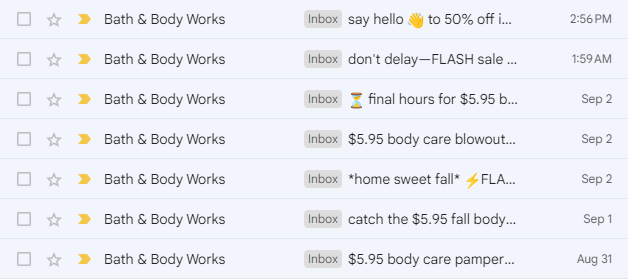
Similarly, emails sent late at night or on weekends will appear disruptive.
Overusing promotional content
When your campaigns are too focused on promotions without offering any real value, subscribers lose interest.
For example, if a brand keeps sending the same discounts and sales offers without mixing in helpful tips, industry insights, or real customer stories, subscribers will eventually lose interest in the brand and see the emails as repetitive and uninspiring.
Fear of missing out on important information (FOMO)
The fear of missing important information in irrelevant emails forces recipients to constantly check their inboxes.
This adds to their fatigue and makes them less willing to engage with future emails when they become exhausted.
How to Overcome Email Fatigue in Simple Steps
In the following section, we’ll see the best ways to tackle the problem and help you prevent it from happening again.
1. Clean up your email list
Subscribers who suffer from email fatigue will clean their inbox at some point and unsubscribe from newsletters they’re not interested in. On your end, you can be proactive and clean your email lists to make sure you’re only targeting active subscribers.
This strategy gives you higher engagement rates and fewer unsubscribes. It also improves deliverability by signaling to email providers that you send relevant emails, mitigating the risk of ending up in spam folders.
An engaged list ensures that your emails reach those who are more likely to interact with them, keeping your campaigns efficient and your audience happy.
Further reading: Check out our full guide for more email list hygiene best practices.
2. Segment your audience
Email list segmentation must be an ongoing part of your list-building process.
By continuously dividing your contacts into specific groups based on demographics, behavior, interests, or engagement levels, you ensure subscribers receive content that resonates with them.
For instance, by creating a dedicated segment of disengaged users—e.g., those who haven’t opened emails in a while—you can either remove them from your list or re-engage them with a series of targeted campaigns, such as exclusive offers or personalized recommendations.
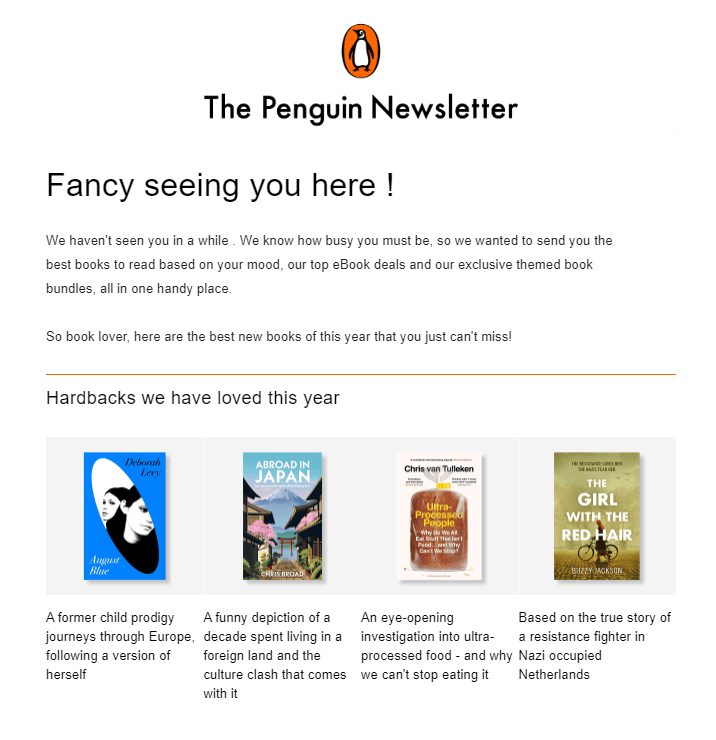
Penguin Books uses this tactic to find inactive subscribers and encourage them to reconnect with the brand.
3. Use email personalization
Personalization is another powerful tool to not only combat email fatigue but also build better relationships with your audience.
There are various types of personalization you can implement in your emails, such as adding the subscriber’s name in the subject line, addressing them by name in the email body, or even creating campaigns automatically based on their actions and behaviors, such as purchase history.
For example, you can use browsing behavior data like Cheekbone Beauty to craft personalized emails that solve the recipient’s pain points. This ensures the content is spot on.
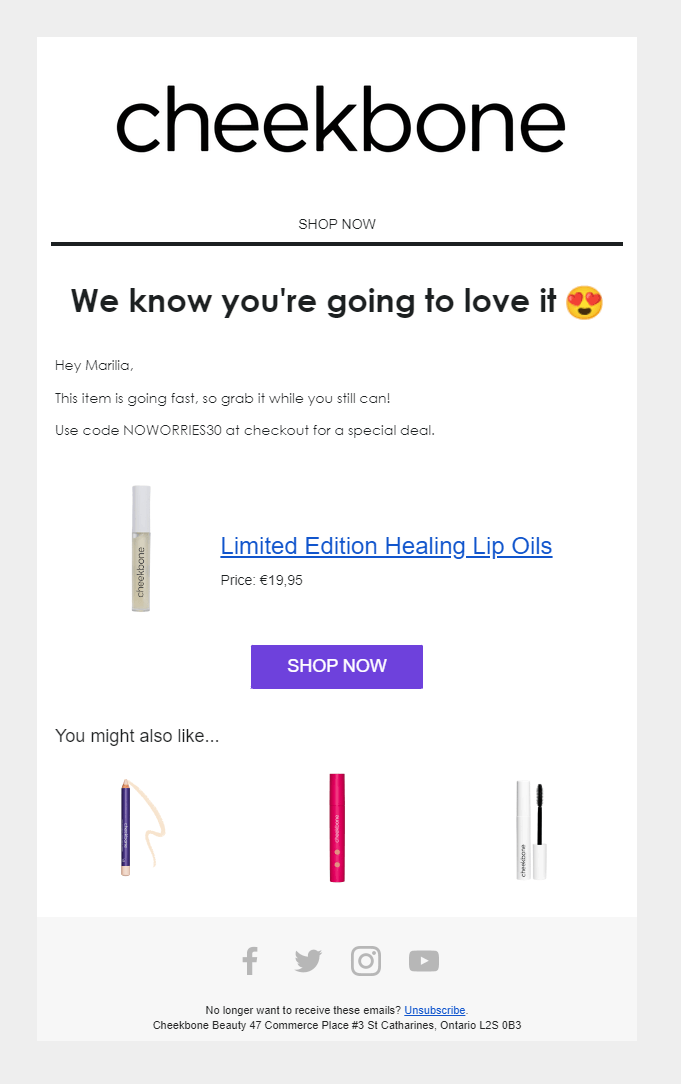
Tip: The easiest way to implement personalization is to add your subscriber’s name to your email subject line.
How to implement: Advanced email marketing platforms, like Moosend, offer powerful personalization features. They allow you to use the data you collect to personalize the user experience at every touchpoint.
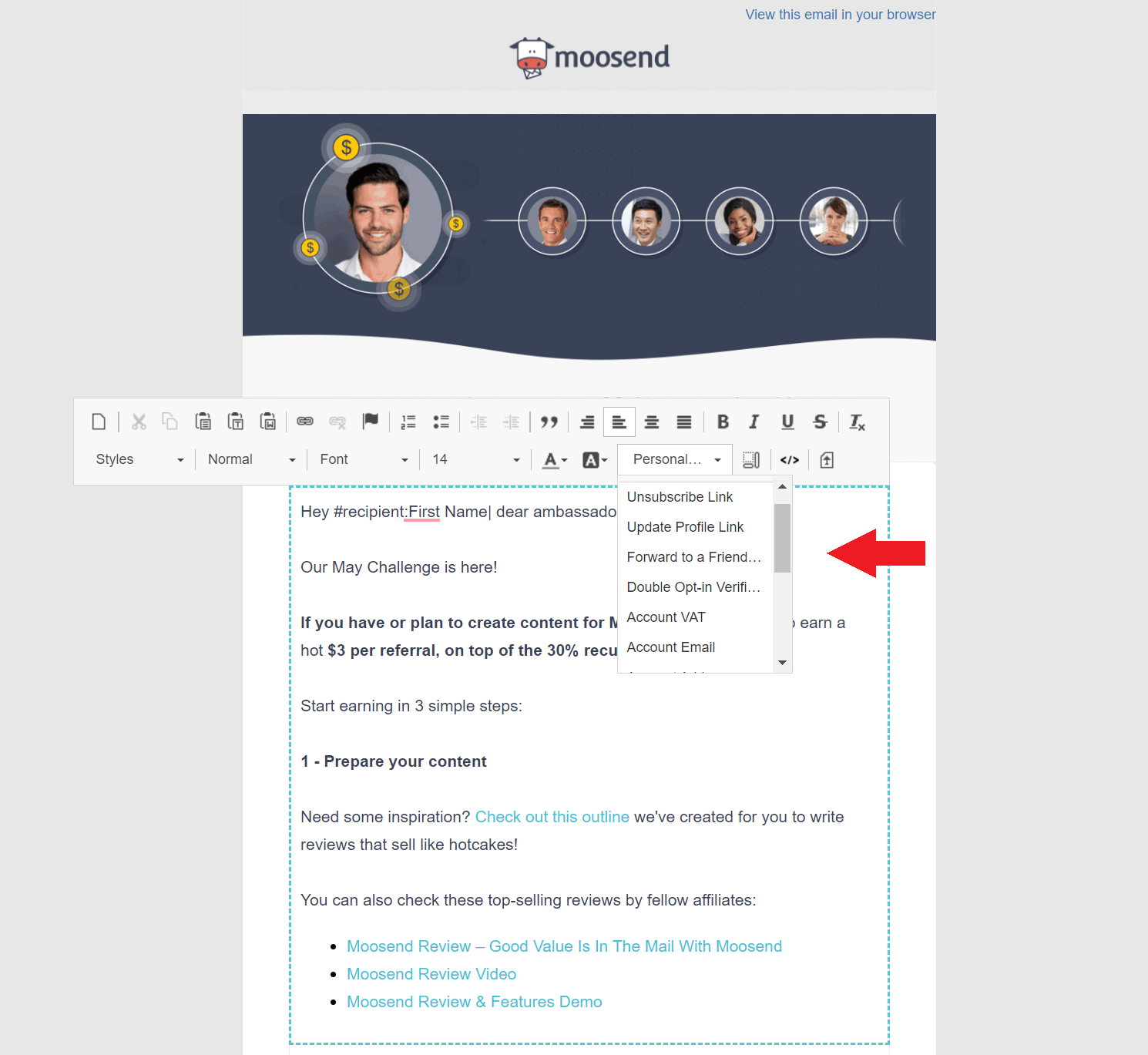
4. Write compelling subject lines
Subject lines are your first impression, and boring or spammy ones will lead your subscribers to unsubscribe.
Avoid being repetitive or using clickbait. A clear, honest subject line that sparks curiosity or offers value is much more effective.
Set the right expectations from the start. Keep it simple, direct, and relevant to your audience. If you’re using their name, make it feel natural.
For example, instead of “The sale is on” try “[Name], your exclusive offer is waiting!”
Further reading: For more tips on how to write great subject lines, check our subject line best practices guide.
5. Create valuable email copy
No one has time for long, drawn-out emails like the one below. And that’s not even half of it.
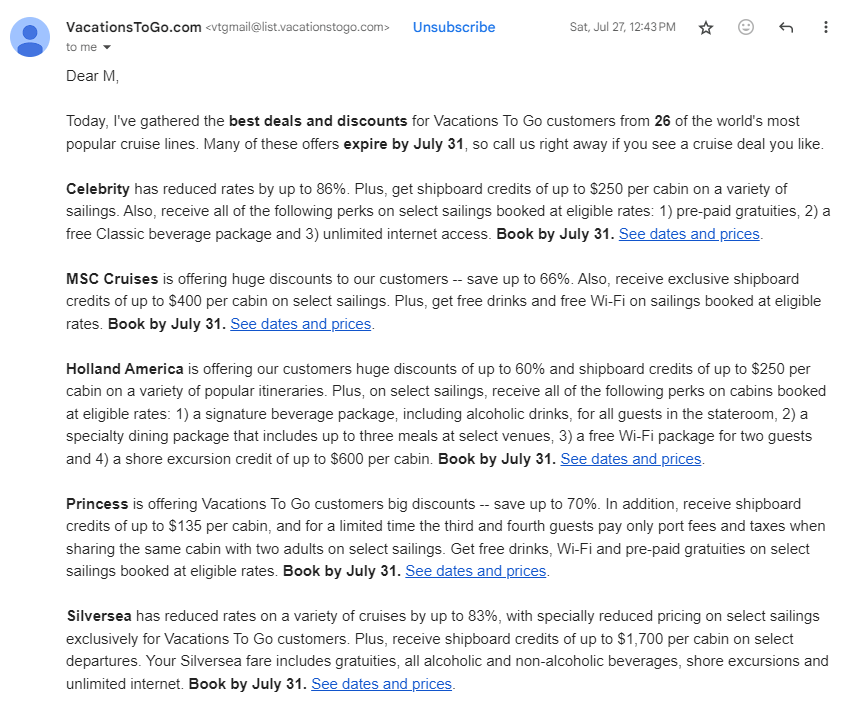
Respect your readers’ time by keeping your email copy concise, clear, and valuable. Avoid large blocks of text and use bullets if you need to add more information.
Focus on solving a problem or addressing a need. Don’t fill your email with unnecessary fluff; instead, provide actionable insights or offers that matter to your audience. Moreover, use friendly, conversational language, but make sure it still fits your brand’s tone.
Lastly, give your readers a clear reason to stay engaged with your message and take action. Even if everything else is done right—segmentation, personalization, and timing—a poorly structured email can still overwhelm them.
6. Pay attention to your email design
Even with the best content, bad design can kill your email’s potential.
Think about readability first: avoid too many visuals, choose email-safe fonts that are easy on the eyes, and ensure your layout is clean.
Slow-loading videos or big images will frustrate your readers and make them hit delete. Simplicity wins. Stick to a design that draws attention to the message, not distracts from it.

Your goal is to make sure your content shines and your readers don’t get overwhelmed or lost in the clutter.
7. Find the best email frequency and timing
Based on Moosend’s analysis, Thursday has the highest open rates, followed closely by Tuesday, while Saturday has the lowest. For the best time of day, 8-9 am proves to be the most effective, with open rates dropping after 6 pm.
As for email frequency, sending 2-5 campaigns per month has the best results, balancing engagement without overwhelming your target audience.
Even if you plan to send ad-hoc campaigns—such as those related to sales or holidays—it’s crucial to plan your emails.
For example, during Black Friday, inboxes are flooded with offers. Sending too many emails at once will overwhelm your subscribers, leading them to ignore your messages.
With a well-planned email calendar, you can space out your emails to maintain the right frequency and avoid getting lost in the crowd.
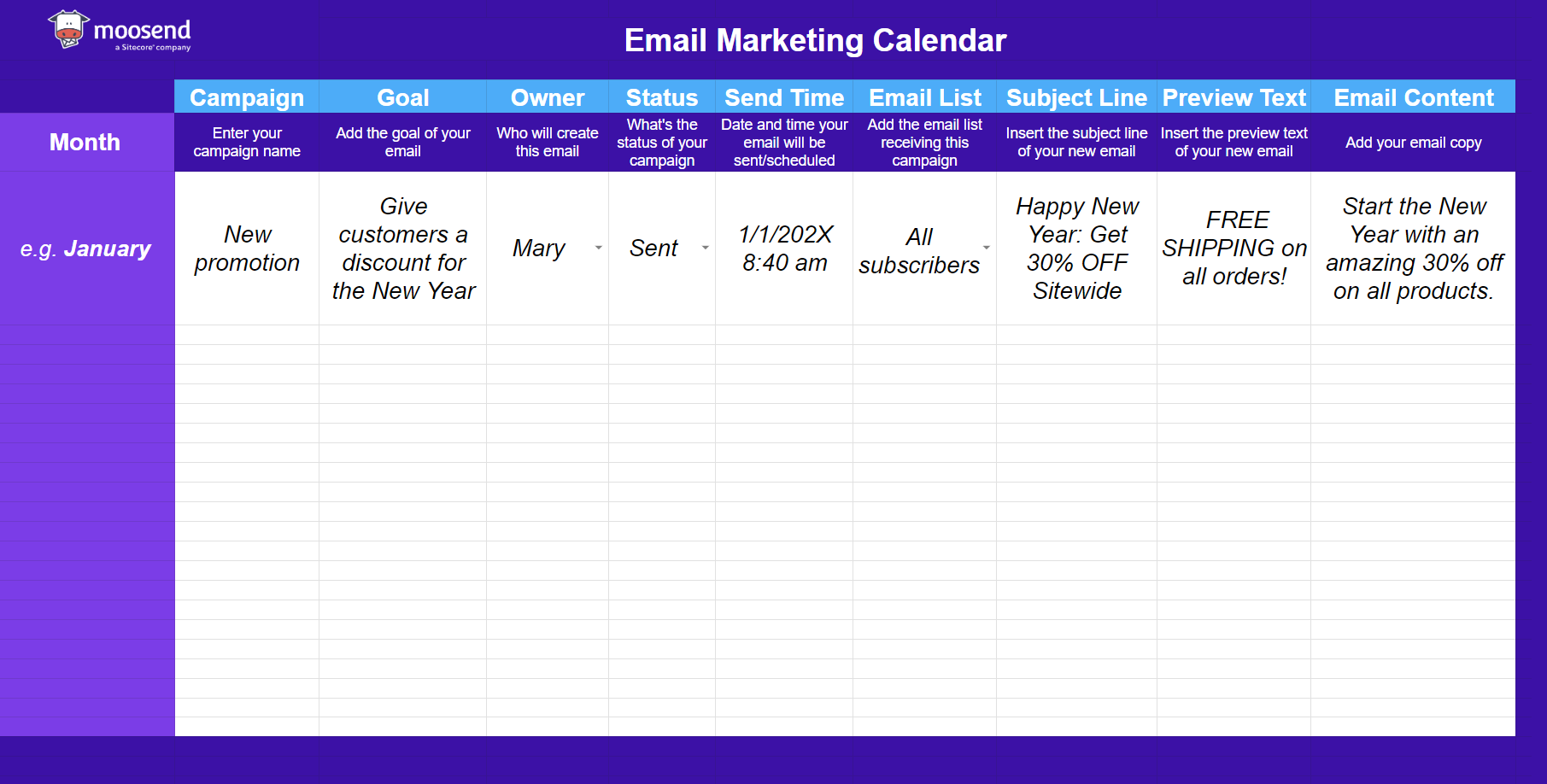
Lastly, consistency is also key to combating email fatigue. If you send your newsletter on the same day and time regularly, your subscribers will learn to expect it, which reduces unpleasant surprises and helps build anticipation.
8. Set up a preference center
The best way to help your audience and keep your sales intact is to give them control over what they receive.
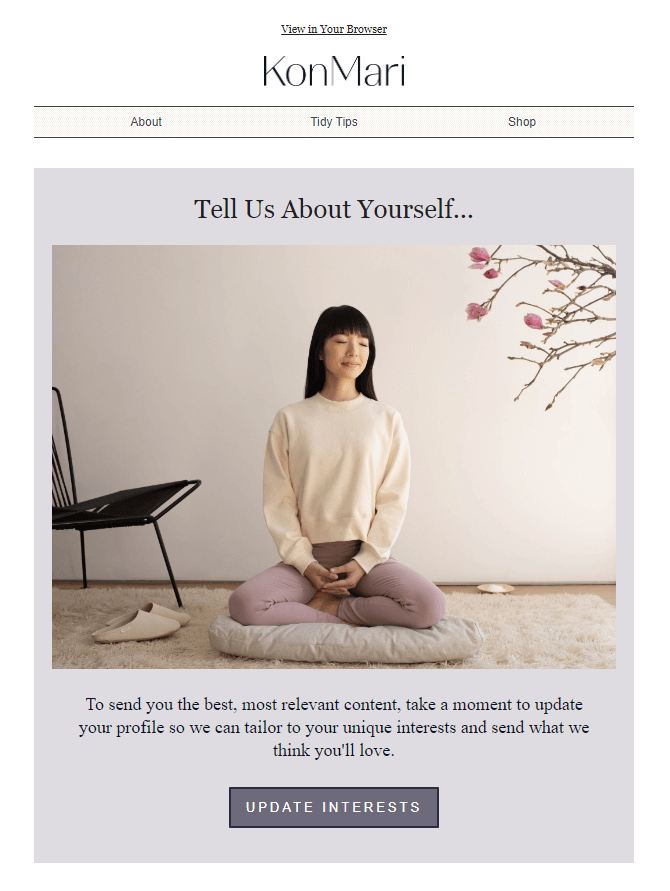
Allow them to select how often they receive your emails and what type of content they want to see, prioritizing personalized experiences.
You can inform your recipients through a dedicated email campaign like KonMari does. Then, let them choose what interests them through your preference center.
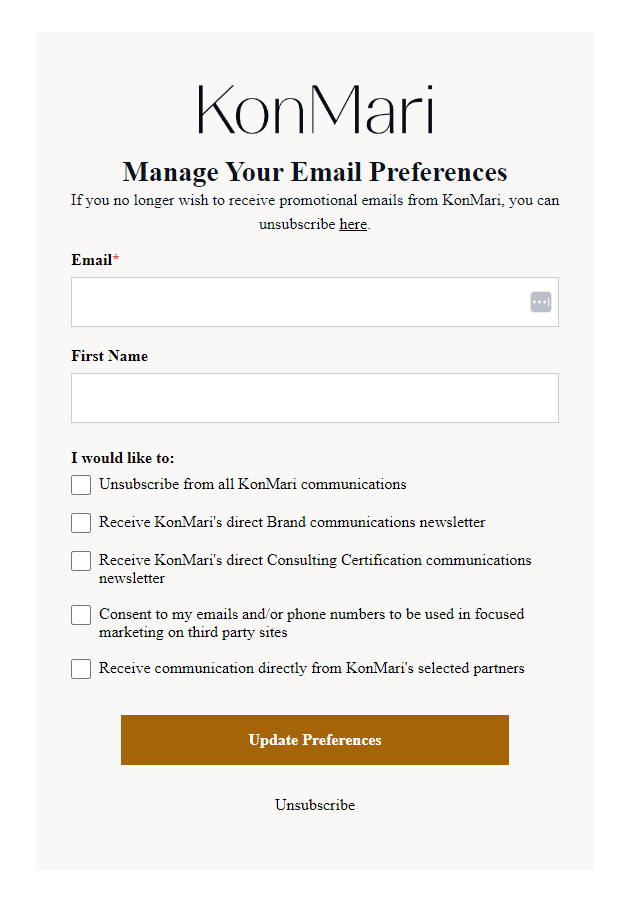
When subscribers can adjust these settings themselves, they’re more likely to stay engaged with your messages because they feel in control of their inbox.
9. Focus on mobile optimization
Many recipients check their emails on their phones. When emails aren’t optimized for smaller screens, they can be frustrating to read.
With 43% of email opens happening on mobile devices, ensuring your mobile-friendly campaigns is more crucial than ever. If your emails suffer from unresponsive email design, bad fonts, or slow loading, recipients are more likely to delete them or unsubscribe.
If you aren’t optimizing for mobile, you need to start now. The most effective method is to edit your campaign through the mobile preview feature of your platform and fix common unresponsiveness issues.
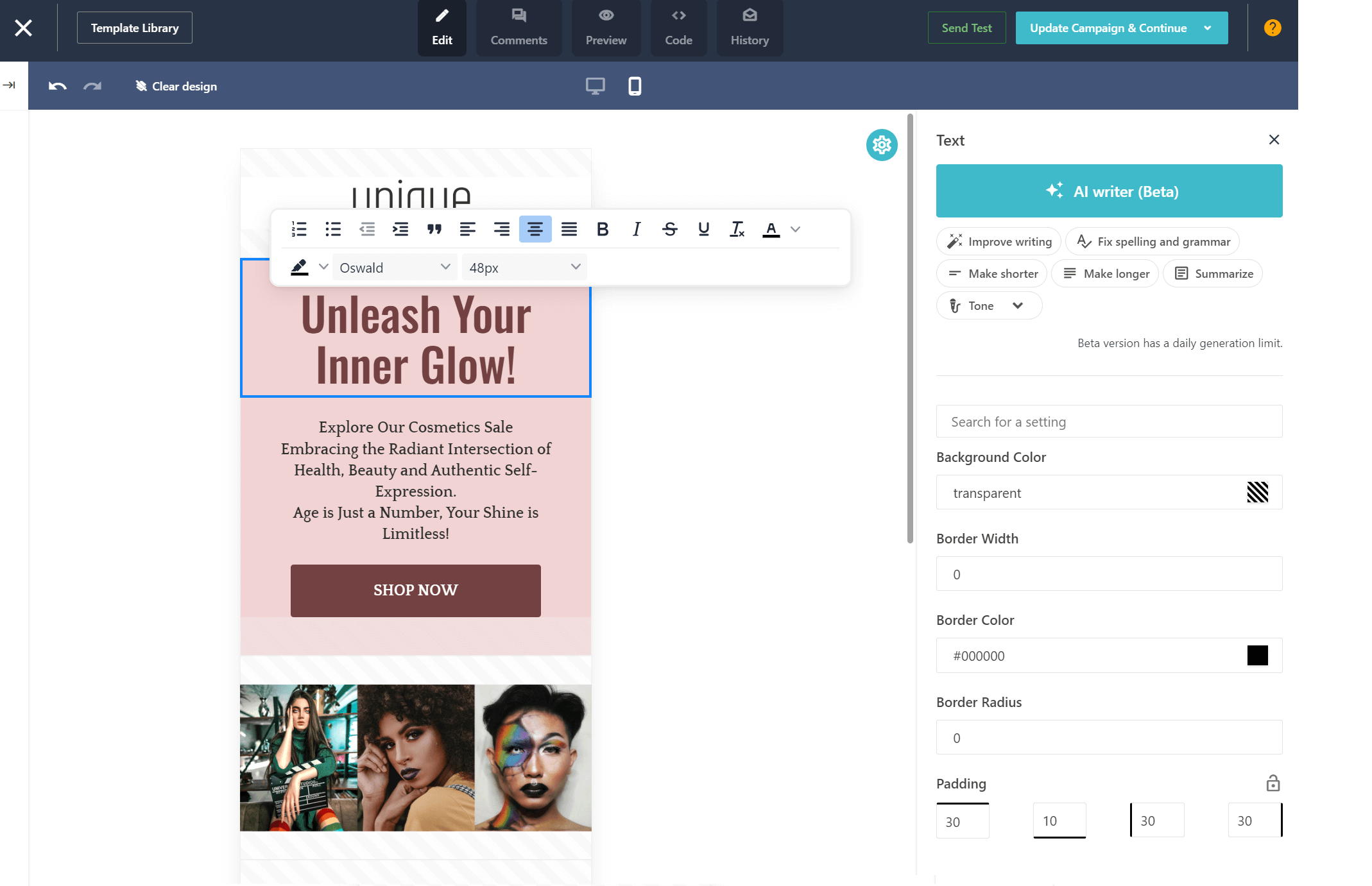
Additionally, choose responsive templates to customize your emails quickly and save time. This way you won’t have to worry about them.
Tip: Make sure you select the appropriate, email-safe fonts for your campaigns, such as Arial and Times New Roman.
10. Diversify your campaigns
To avoid repetitive emails, mix and match different types of content to appeal to your audience’s diverse interests and needs.
For example, in September, businesses have various opportunities to create engaging campaigns.
Start with a Labor Day sale to attract shoppers looking for holiday deals. Follow that with back-to-school promotional emails, targeting students, parents, or educators preparing for the new academic year.
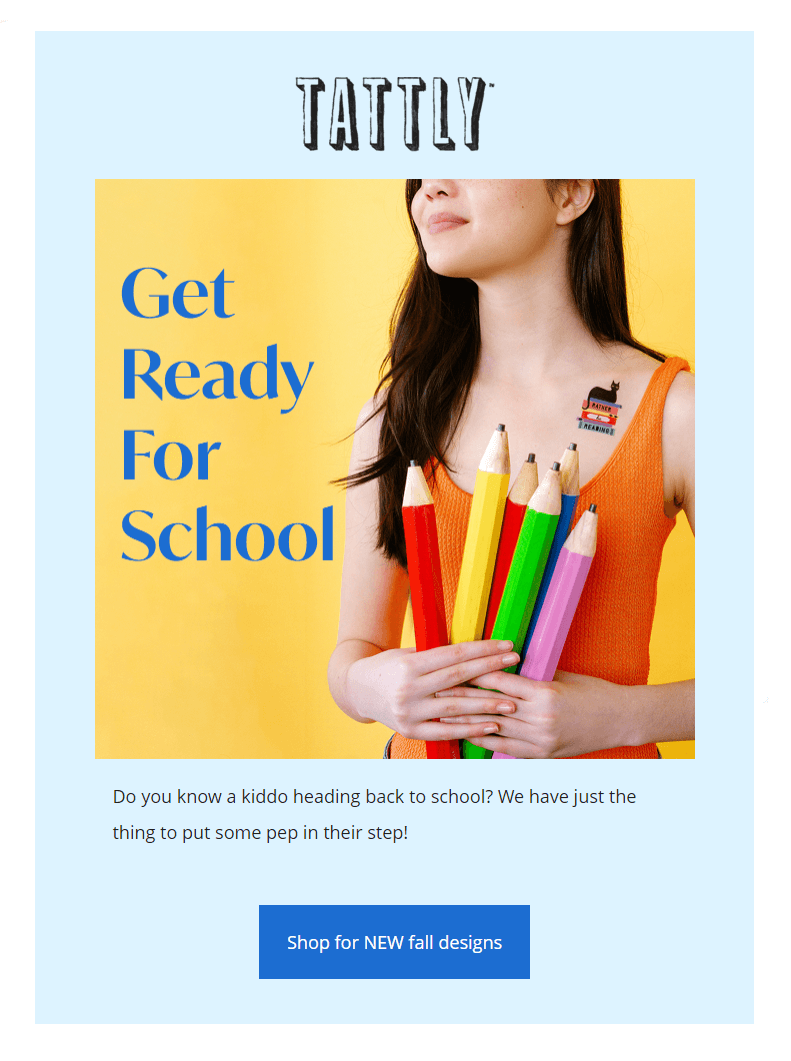
Later in the month, you could offer educational content in honor of the International Day of Peace, showcasing your brand’s commitment and humanitarian actions.
To achieve campaign variety in your strategy, you can use the following types of emails:
- Promotional: Discounts, special offers, or sales.
- Educational: Tips, how-tos, or industry insights.
- Newsletters: News, updates, and curated content.
- Product recommendations: Personalized suggestions based on past behavior.
- Re-engagement emails: Campaigns aimed at bringing back inactive subscribers.
Further reading: For more, visit our monthly email planner series focusing on September email campaigns.
11. Set up re-engagement campaigns
After cleaning up your email list and segmenting inactive subscribers, you can create targeted campaigns designed specifically to re-engage these users.
One powerful way to manage this process is by using marketing automation to set up automated re-engagement sequences that deliver the right message at the right time.
For example, you might start with a “We Miss You” email, followed by a special offer or exclusive content if the user doesn’t interact with the first message.
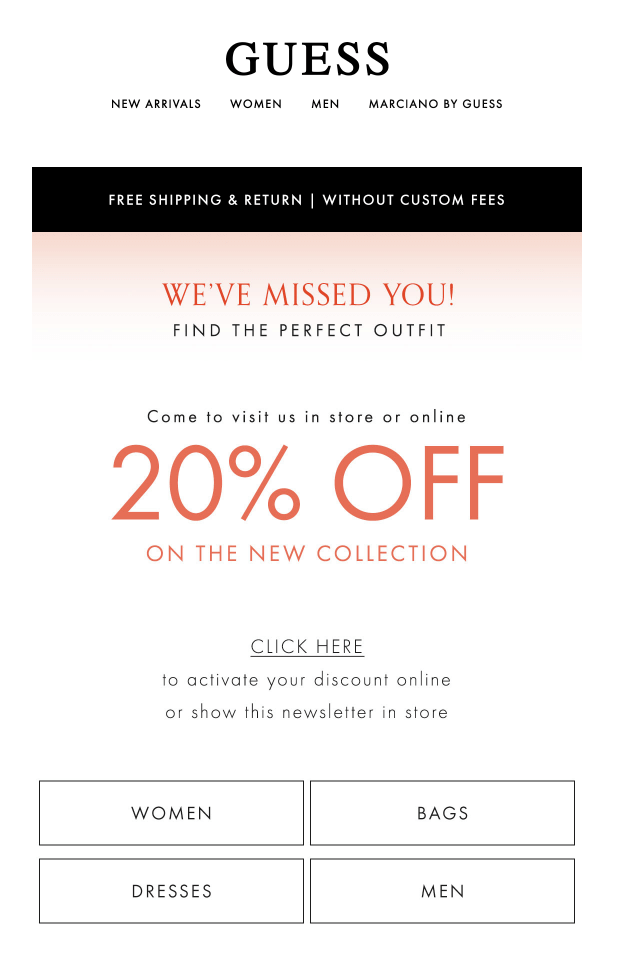
Automation not only saves time but also helps you target your audience when they’re most likely to re-engage.
12. Collect subscriber feedback
Use surveys, polls, or feedback buttons in your emails to ask how often your subscribers want to receive messages and what content they find most useful.
This helps you optimize your strategy based on direct input, ensuring your emails stay relevant and appreciated.
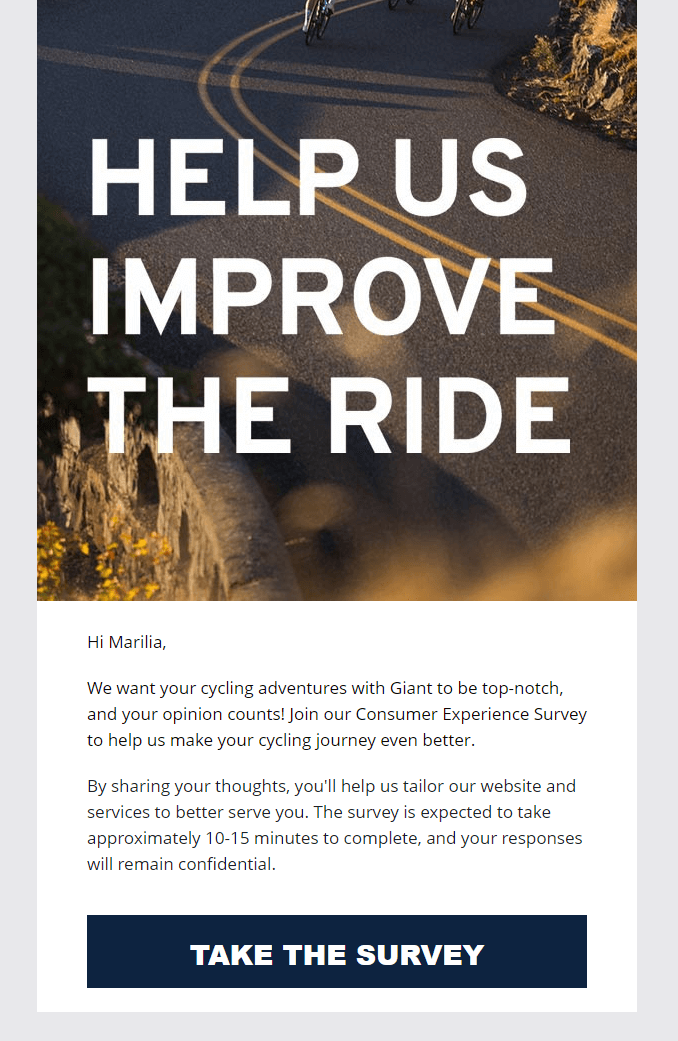
By showing subscribers that their feedback matters, you improve engagement and reduce the chances of overwhelming them with unwanted emails.
13. Monitor engagement metrics regularly
Keep email fatigue in check by tracking key metrics like open rates, click-through rates, unsubscribe rates, and spam complaints. A sudden change in any of these areas can indicate a resurgence of message fatigue.
Furthermore, regularly reviewing these numbers lets you act quickly to adjust your email frequency, content, or targeting strategies. This proactive approach helps prevent future instances and ensures that your subscribers remain engaged with your emails over time.
How to Create Good Re-Engagement Email Campaigns
Re-engagement email campaigns are a great way to win back inactive subscribers. You can easily set them up using your marketing automation tool.
To do that, let’s go over the key strategies you need to implement for effective re-engagement.
- Personalize the message: Use the recipient’s name and tailor the content to their past behavior or interests to show you understand their needs.
- Create a clear call-to-action: Make it easy for inactive subscribers to re-engage by including a direct and compelling CTA, such as a special offer or incentive.
- Write a good value proposition: Include discounts, exclusive content, or special promotions to entice inactive subscribers to return.
- Keep it simple: Use clear, concise language and minimal design to make the message straightforward and focused.
- Use a series of emails: Don’t rely on a single email; set up an automated series of re-engagement emails to gradually bring the subscriber back.
- Optimize your content: A/B test subject lines, email body copy, CTA, and offers to see what works best in bringing subscribers back.
- Enable easy opt-out: Include an option to unsubscribe easily, so only those who are genuinely interested stay on your list.
With an email marketing tool like Moosend, you can easily set up different workflows using pre-made automation templates and a visual editor.
You can set up your sequences through the workflow builder by signing up for a free account.
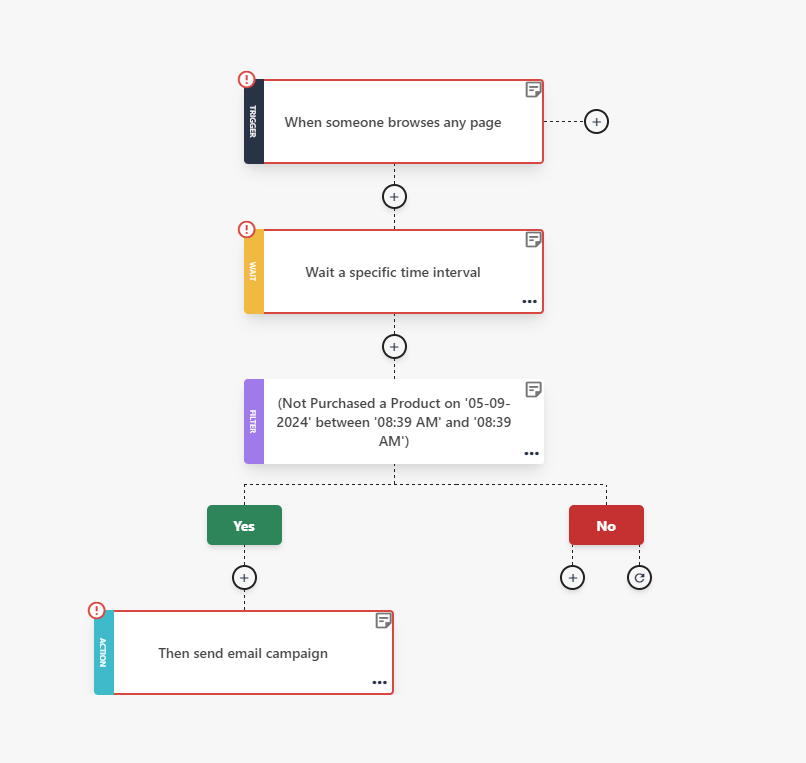
Additional Resources
- Best Email Testing Tools
- Product Recommendation Email Examples to Boost Your Sales
- Personalized Email Templates to Boost Sales and Conversions
- Effective Survey Email Subject Lines [+ Examples & Tips]
Overcoming and Preventing Email Fatigue
By following these best practices, you will protect your subscribers from email fatigue and improve your results.
Sending fewer, more targeted emails leads to better metrics, a more engaged audience, and a stronger connection with your brand. Ultimately, it’s not about how many emails you send—it’s about sending the right ones that matter.
To support your re-engagement strategy, consider using an email tool with features designed to simplify the process. You can start exploring your options by signing up for a free Moosend account.
FAQs
Here, you’ll find some common questions about email fatigue.
1. What are the signs of email fatigue?
Email burnout is often marked by decreased open rates, lower click-through rates, and increased unsubscribes. Additionally, spam complaints may rise as frustrated recipients mark emails as spam. Another sign is a lack of response to re-engagement campaigns, showing that attempts to reconnect are unsuccessful.
2. Why is email so overwhelming?
Email can feel overwhelming due to the sheer volume people receive daily, making it difficult to prioritize which messages are important. The pressure to maintain a work-life balance worsens when work-related emails are sent outside business hours, contributing to stress and fatigue.
3. How does email segmentation help reduce fatigue?
Segmenting your email list allows you to send targeted content based on recipients’ interests and behaviors, avoiding generic messages that contribute to fatigue.
4. Why is A/B testing important for email campaigns?
A/B testing helps optimize email content, timing, and frequency, ensuring that recipients get well-timed messages.
5. How do notifications and social media contribute to email fatigue?
Notifications and social media flood users with constant alerts and updates. The additional number of messages outside of the inbox makes it harder for recipients to focus on important messages, leading to frustration, disengagement, and higher unsubscribe rates.
6. How does email fatigue affect Americans specifically?
Many Americans feel overwhelmed by the volume of marketing emails they receive daily. In fact, 38% of workers say email fatigue could lead them to quit their jobs. With the increased reliance on digital communication, especially post-pandemic, email burnout has become more common, causing disengagement from brands.
7. Does sender reputation influence email fatigue?
If your emails are frequently marked as spam or go unnoticed, your sender’s reputation suffers. Poor sender’s reputation can result in emails landing in the spam folder, making subscribers grow weary of promotional content.
